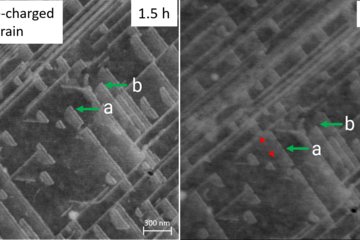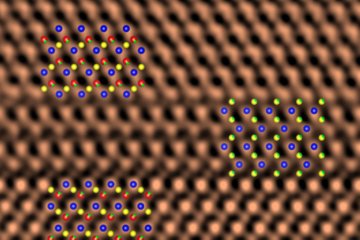All genres
2361.
Thesis - PhD
Modeling of the microstructural effects on the mechanical response of polycrystals. Dissertation, RWTH Aachen University (2021)
2362.
Thesis - PhD
Precipitation during Intrinsic Heat Treatment in Laser Additive Manufacturing. Dissertation, RWTH Aachen University (2020)
2363.
Thesis - PhD
Investigations on the Mechanisms of Ductilization of Mg Alloys with Ca, Al and Zn. Dissertation, Ruhr-Universität Bochum (2020)
2364.
Thesis - PhD
Nanostructured cellulose aerogel reinforced polymers. Dissertation, Fakultät für Georessourcen und Materialtechnik der RWTH Aachen, Germany (2020)
2365.
Thesis - PhD
Nanostrukturierte Cellulose-Aerogel-Polyesterverbunde. Dissertation, RWTH Aachen University (2020)
2366.
Thesis - PhD
Microstructure alterations in bearing steels exposed to severe plastic deformation. Dissertation, RWTH Aachen University (2020)
2367.
Thesis - PhD
Design of materials with anomalous thermophysical properties and desorption-assisted phase formation of intermetallic thin films. Dissertation, RWTH Aachen University (2020)
2368.
Thesis - PhD
Microstructural Relationships of Strength and Ductility in a Newly Developed Mg–Al–Zn Alloy for Potential Automotive Applications. Dissertation, RWTH Aachen University (2020)
2369.
Thesis - PhD
Microstructural Relationships of Strength and Ductility in a Newly Developed Mg–Al–Zn Alloy for Po-tential Automotive Applications. Dissertation, RWTH Aachen University (2020)
2370.
Thesis - PhD
Precipitation Reactions During the Intrinsic Heat Treatment of Laser Additive Manufacturing. Dissertation, RWTH Aachen University (2019)
2371.
Thesis - PhD
Deformation behaviour and texture memory effect of multiphase nano-laminate medium manganese steels. Dissertation, RWTH Aachen University (2019)
2372.
Thesis - PhD
On the interfacial defect formation mechanism during laser additive manufac-turing of polycrystalline superalloys. Dissertation, Ruhr-Universität Bochum (2019)
2373.
Thesis - PhD
A study on low-cycle fatigue behaviour of high-manganese steels. Dissertation, RWTH Aachen University (2019)
2374.
Thesis - PhD
Segregation and precipitation at interfaces in a model Al–Zn–Mg–Cu alloy. Dissertation, RWTH Aachen University (2019)
2375.
Thesis - PhD
On the interfacial defect formation mechanism during laser additive manufacturing of polycrystalline superalloys. Dissertation, Ruhr-Universität Bochum (2019)
2376.
Thesis - PhD
Challenges and opportunities associated to the characterization of H/D in Ti and its alloys with atom probe tomography. Dissertation, RWTH Aachen University (2019)
2377.
Thesis - PhD
Laser Additive Manufacturing of Oxide Dispersion Strengthened Steels and Cu–Cr–Nb Alloys. Dissertation, RWTH Aachen University (2019)
2378.
Thesis - PhD
Damage and Strain Patterning Simulation of Structural Heterogeneity. Dissertation, RWTH Aachen University (2019)
2379.
Thesis - PhD
On chemically sensitive atomic scale imaging. Dissertation, Ruhr-Universität Bochum, Bochum, Germany (2018)
2380.
Thesis - PhD
Phase nucleation through confined spinodal fluctuations at crystal defects in Fe–Mn alloys. Dissertation, RWTH, Aachen, Germany (2018)











